 First Spanish Reader for beginners Bilingual for Speakers of English by Maria Victoria De Stefano Proofreading Christina Barth Third edition Audio tracks are available on lppbooks.com free of charge We strive to avoid typos and inaccuracies. However, on occasion we make mistakes. We value your contributions and help in correcting them. To report typos or inaccuracies, please mail to editor@lppbooks.com 2012Language Practice Publishing All rights reserved. This book is in copyright. Name .. IPA A .. a .. /a/ B .. be .. /b/ C .. ce .. /k/, // CH .. che .. /tS/ D .. de .. /d/ E .. e .. /e/ F .. efe .. /f/ G .. ge .. /g/, /x/ H .. hache silent I .. i .. /i/ J .. jota .. /x/ K .. ka .. /k/ L .. ele .. /l/ LL .. elle .. // M .. eme .. /m/ N .. ene .. /n/ .. ee .. /J/ O .. o .. /o/ P .. pe .. /p/ Q .. cu .. /k/ R .. erre .. /r/ S .. ese .. /s/ T .. te .. /t/ U .. u .. /u/ V .. uve .. /b/ W .. doble uve .. /gw/ X .. equis .. /x/, /ks/ Y .. i griega .. /i/ Z .. zeta .. // Rules of pronunciation The letters ch (che), ll (elle) and rr (erre) were included in the official Spanish alphabet. // Rules of pronunciation The letters ch (che), ll (elle) and rr (erre) were included in the official Spanish alphabet.
First Spanish Reader for beginners Bilingual for Speakers of English by Maria Victoria De Stefano Proofreading Christina Barth Third edition Audio tracks are available on lppbooks.com free of charge We strive to avoid typos and inaccuracies. However, on occasion we make mistakes. We value your contributions and help in correcting them. To report typos or inaccuracies, please mail to editor@lppbooks.com 2012Language Practice Publishing All rights reserved. This book is in copyright. Name .. IPA A .. a .. /a/ B .. be .. /b/ C .. ce .. /k/, // CH .. che .. /tS/ D .. de .. /d/ E .. e .. /e/ F .. efe .. /f/ G .. ge .. /g/, /x/ H .. hache silent I .. i .. /i/ J .. jota .. /x/ K .. ka .. /k/ L .. ele .. /l/ LL .. elle .. // M .. eme .. /m/ N .. ene .. /n/ .. ee .. /J/ O .. o .. /o/ P .. pe .. /p/ Q .. cu .. /k/ R .. erre .. /r/ S .. ese .. /s/ T .. te .. /t/ U .. u .. /u/ V .. uve .. /b/ W .. doble uve .. /gw/ X .. equis .. /x/, /ks/ Y .. i griega .. /i/ Z .. zeta .. // Rules of pronunciation The letters ch (che), ll (elle) and rr (erre) were included in the official Spanish alphabet. // Rules of pronunciation The letters ch (che), ll (elle) and rr (erre) were included in the official Spanish alphabet.
However in 1994 the Royal Spanish Academy (RAE) decreed that these letters would no longer be treated as separate letters in dictionaries. Spanish is a syllable-timed language. This means each syllable is given the same amount of time for pronunciation. Stressed syllables are treated in the same manner. They are not given more or less time to enunciate. Words ending with a vowel or "s" have the stress placed on the next-to-last syllable.
Words ending in consonants (other than "s") are stressed on the last syllable. Phonetics can be determined from the spelling of words. Spanish makes use of diacritics, or accents, to distinguish letters, words with the same spelling but different meaning and assist with pronunciation. The tilde (~) is placed over the "" to differentiate it from "n". Acute accents () determine syllable stresses, pronunciation and meanings of words. The dieresis is placed over the "" when it is used in the combinations of "ge" and "gi" to indicate the "" is not silent.
Inverted question and exclamations marks are placed at the beginning and with regular punctuation marks at the end of interrogative statements or questions (i.e. "What is your name?" is punctuated in Spanish as "Cul es su nombre?"). These punctuation marks distinguish between questions and statements, which are sometimes written with the exact same words. The letters "k" and "w" are not found in native Spanish words. They exist only in loan words. The letter "c" is pronounced as a "k" if it is followed by an "a", "o" or "u" and with an "s" sound if an "i" or "e" is next.
A "g" followed by "a", "o" or "u" is pronounced as a "hard g", while a "g" followed by an "i" or "e" are articulated as a "soft g". The letter "h" is always silent in Spanish. "Ch" is treated as one letter and the sound values are never divided. "Q" is always accompanied by a "u" and pronounced as a "k". A word beginning with an "r" is always spelled with a singular "r". "V" is enunciated as a soft "b". "V" is enunciated as a soft "b".
The letter "z" is only placed in front of the vowels "a", "o" and "u". If a word ending with a "z" requires pluralizing and, consequently, the "z" is followed by an "i" or "e", the "z" changes to a "c" and is pronounced with an "s" sound. Pronunciation of European Spanish b - [] between vowels, [b] elsewhere. c - [] before i or e, [k] elsewhere. d - [] between vowels, [d] elsewhere. gu - [g] before i or e, [gw] elsewhere. g only appears before i or e. n - [ ] before g, x and k, [n] elsewhere. n - [
] before g, x and k, [n] elsewhere. n - [ ] before g, x and k, [n] elsewhere.
] before g, x and k, [n] elsewhere.
At the ends of words n - [ ] or [n]. r - [
] or [n]. r - [ ] between vowels and in consonant clusters such as br, pr and tr, [r] elsewhere. At the ends of words and syllables s often not pronounced, e.g. peces - /'pees/ in northern Spain, /'peeh/ in central Spain, /'peseh/ in southern Spain, and /'pes/ in the southeast of Spain. v - [] between vowels, [b] elsewhere. w appears only in loanwords.
] between vowels and in consonant clusters such as br, pr and tr, [r] elsewhere. At the ends of words and syllables s often not pronounced, e.g. peces - /'pees/ in northern Spain, /'peeh/ in central Spain, /'peseh/ in southern Spain, and /'pes/ in the southeast of Spain. v - [] between vowels, [b] elsewhere. w appears only in loanwords.
Pronunciation of Spanish in Latin America Vowels are the same as European Spanish: c - [s] before i or e, but [k] elsewhere. g - [x] (or [h] in some countries) before i or e, [g] or [ ] elsewhere. gu - [g] before i or e, but [gw] elsewhere. ll - [j] or [d
] elsewhere. gu - [g] before i or e, but [gw] elsewhere. ll - [j] or [d ] in most places, though the original pronunciation of [
] in most places, though the original pronunciation of [ ] is still used in some areas. ll - [
] is still used in some areas. ll - [ ] or [
] or [ ] in Argentina. tengo (I have), [n] elsewhere. r - [
] in Argentina. tengo (I have), [n] elsewhere. r - [ ] between vowels, [r] elsewhere. rr - [
] between vowels, [r] elsewhere. rr - [ ] or [l] in Puerto Rico. s - [h] at the ends of words and syllables in Argentina and Chile, e.g. peces - /'peseh/. peces - /'peseh/.
] or [l] in Puerto Rico. s - [h] at the ends of words and syllables in Argentina and Chile, e.g. peces - /'peseh/. peces - /'peseh/.
In the Caribbean it is not pronounced in that position, e.g. peces - /'pes/. x - [s] at the beginning of words, [ks] elsewhere. In words borrowed from Nahuatl, Mayan or other indigenous languages of Mexico, x - [ ] or [s]. y - [i] at the end of syllables, such as hay, buey and muy, [j] as a consonant or semiconsonant. k and w appear mainly in loan words.
] or [s]. y - [i] at the end of syllables, such as hay, buey and muy, [j] as a consonant or semiconsonant. k and w appear mainly in loan words.  Captulo 1 Chapter 1
Captulo 1 Chapter 1  Mike tiene un perro Mike has a dog
Mike tiene un perro Mike has a dog  Palabras Words 1. aquel - that 2. aquellos - those 3. azul - blue 4. bicicleta - bike 5. calle - street 6. calles - streets 7. cama - bed 8. camas - beds 9. camas - beds 9.
Palabras Words 1. aquel - that 2. aquellos - those 3. azul - blue 4. bicicleta - bike 5. calle - street 6. calles - streets 7. cama - bed 8. camas - beds 9. camas - beds 9.
Ciudad de Mxico - Mxico City 10. cuaderno - notebook 11. cuadernos - notebooks 12. cuatro - four 13. l - he 14. este - this; este libro - this book 16. estos - these 17. estrella - star 18. estudiante - student 19. estudiantes - students 20. gato - cat 21. grande - big 22. habitacin - room 23. habitaciones - rooms 24. hotel - hotel 25. hoteles - hotels 26. hoteles - hotels 26.
Jos - Jos 27. Kazuki- Kasuki 28. libro - book 29. lindo - linda - nice 30. mesa - table 31. mi- mis - my 33. mi- mis - my 33.
Mike - Mike 34. muchos, mucho - many, much 35. nariz - nose 36. negro - black 37. no - not 38. ojo - eye 40. ojos - eyes 41. palabra - word 42. palabras - words 43. parque - park 44. parques - parks 45. pequeo - little 46. perro - dog 47. perro - dog 47.
Pluma, bolgrafo - pen 48. Plumas, bolgrafos - pens 49. su - his; su cama - his bed 50. sueo - dream 51. tambin - too 52. texto - text 54. tienda - shop 55. tiendas - shops 56. tiene- has; l tiene un libro. - He has a book. 57. uno - one 58. ventana - window 59. ventanas - windows 60. verde - green 61. y - and 62. yo - I 
Next page
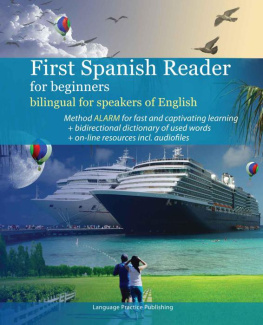
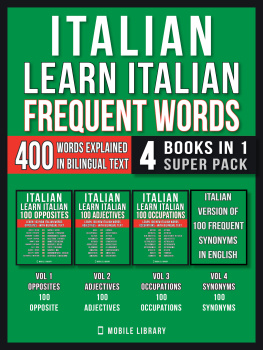


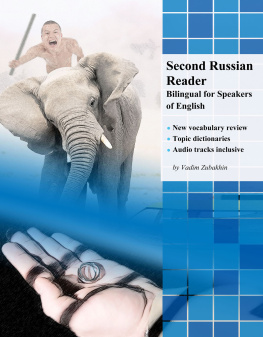
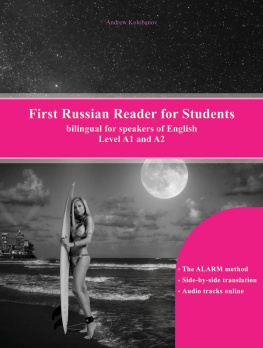



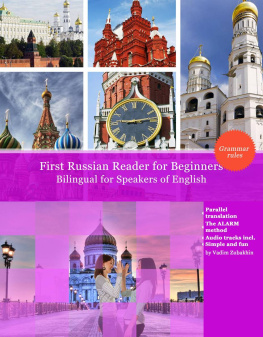
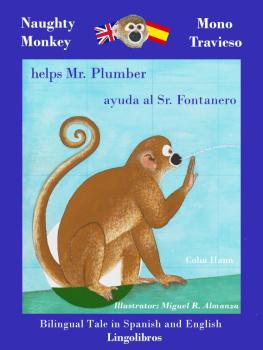

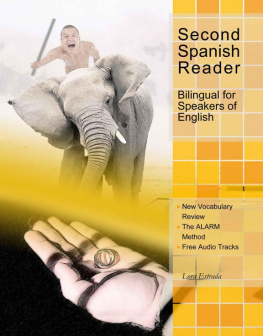
 First Spanish Reader for beginners Bilingual for Speakers of English by Maria Victoria De Stefano Proofreading Christina Barth Third edition Audio tracks are available on lppbooks.com free of charge We strive to avoid typos and inaccuracies. However, on occasion we make mistakes. We value your contributions and help in correcting them. To report typos or inaccuracies, please mail to editor@lppbooks.com 2012Language Practice Publishing All rights reserved. This book is in copyright. Name .. IPA A .. a .. /a/ B .. be .. /b/ C .. ce .. /k/, // CH .. che .. /tS/ D .. de .. /d/ E .. e .. /e/ F .. efe .. /f/ G .. ge .. /g/, /x/ H .. hache silent I .. i .. /i/ J .. jota .. /x/ K .. ka .. /k/ L .. ele .. /l/ LL .. elle .. // M .. eme .. /m/ N .. ene .. /n/ .. ee .. /J/ O .. o .. /o/ P .. pe .. /p/ Q .. cu .. /k/ R .. erre .. /r/ S .. ese .. /s/ T .. te .. /t/ U .. u .. /u/ V .. uve .. /b/ W .. doble uve .. /gw/ X .. equis .. /x/, /ks/ Y .. i griega .. /i/ Z .. zeta .. // Rules of pronunciation The letters ch (che), ll (elle) and rr (erre) were included in the official Spanish alphabet. // Rules of pronunciation The letters ch (che), ll (elle) and rr (erre) were included in the official Spanish alphabet.
First Spanish Reader for beginners Bilingual for Speakers of English by Maria Victoria De Stefano Proofreading Christina Barth Third edition Audio tracks are available on lppbooks.com free of charge We strive to avoid typos and inaccuracies. However, on occasion we make mistakes. We value your contributions and help in correcting them. To report typos or inaccuracies, please mail to editor@lppbooks.com 2012Language Practice Publishing All rights reserved. This book is in copyright. Name .. IPA A .. a .. /a/ B .. be .. /b/ C .. ce .. /k/, // CH .. che .. /tS/ D .. de .. /d/ E .. e .. /e/ F .. efe .. /f/ G .. ge .. /g/, /x/ H .. hache silent I .. i .. /i/ J .. jota .. /x/ K .. ka .. /k/ L .. ele .. /l/ LL .. elle .. // M .. eme .. /m/ N .. ene .. /n/ .. ee .. /J/ O .. o .. /o/ P .. pe .. /p/ Q .. cu .. /k/ R .. erre .. /r/ S .. ese .. /s/ T .. te .. /t/ U .. u .. /u/ V .. uve .. /b/ W .. doble uve .. /gw/ X .. equis .. /x/, /ks/ Y .. i griega .. /i/ Z .. zeta .. // Rules of pronunciation The letters ch (che), ll (elle) and rr (erre) were included in the official Spanish alphabet. // Rules of pronunciation The letters ch (che), ll (elle) and rr (erre) were included in the official Spanish alphabet. ] before g, x and k, [n] elsewhere. n - [
] before g, x and k, [n] elsewhere. n - [ ] between vowels and in consonant clusters such as br, pr and tr, [r] elsewhere. At the ends of words and syllables s often not pronounced, e.g. peces - /'pees/ in northern Spain, /'peeh/ in central Spain, /'peseh/ in southern Spain, and /'pes/ in the southeast of Spain. v - [] between vowels, [b] elsewhere. w appears only in loanwords.
] between vowels and in consonant clusters such as br, pr and tr, [r] elsewhere. At the ends of words and syllables s often not pronounced, e.g. peces - /'pees/ in northern Spain, /'peeh/ in central Spain, /'peseh/ in southern Spain, and /'pes/ in the southeast of Spain. v - [] between vowels, [b] elsewhere. w appears only in loanwords. ] elsewhere. gu - [g] before i or e, but [gw] elsewhere. ll - [j] or [d
] elsewhere. gu - [g] before i or e, but [gw] elsewhere. ll - [j] or [d ] in most places, though the original pronunciation of [
] in most places, though the original pronunciation of [ ] is still used in some areas. ll - [
] is still used in some areas. ll - [ ] or [
] or [ ] in Argentina. tengo (I have), [n] elsewhere. r - [
] in Argentina. tengo (I have), [n] elsewhere. r - [ ] or [l] in Puerto Rico. s - [h] at the ends of words and syllables in Argentina and Chile, e.g. peces - /'peseh/. peces - /'peseh/.
] or [l] in Puerto Rico. s - [h] at the ends of words and syllables in Argentina and Chile, e.g. peces - /'peseh/. peces - /'peseh/. Captulo 1 Chapter 1
Captulo 1 Chapter 1  Mike tiene un perro Mike has a dog
Mike tiene un perro Mike has a dog  Palabras Words 1. aquel - that 2. aquellos - those 3. azul - blue 4. bicicleta - bike 5. calle - street 6. calles - streets 7. cama - bed 8. camas - beds 9. camas - beds 9.
Palabras Words 1. aquel - that 2. aquellos - those 3. azul - blue 4. bicicleta - bike 5. calle - street 6. calles - streets 7. cama - bed 8. camas - beds 9. camas - beds 9.